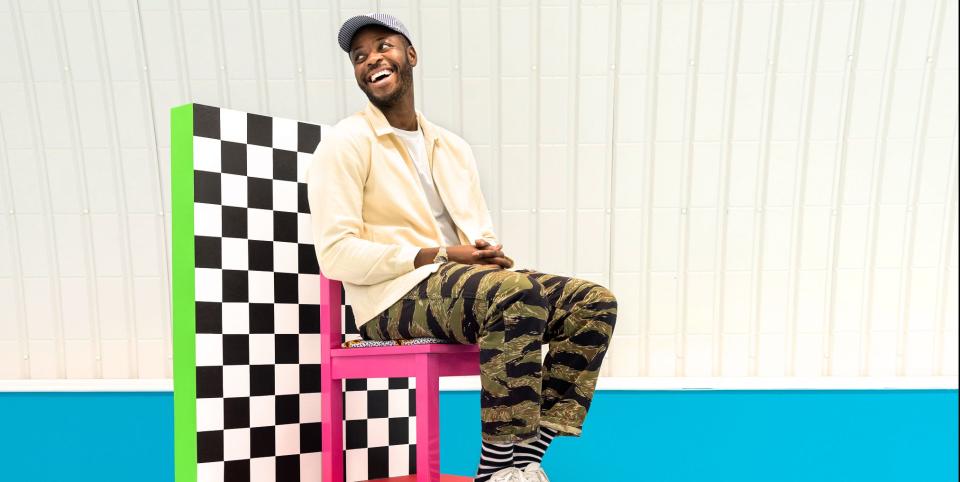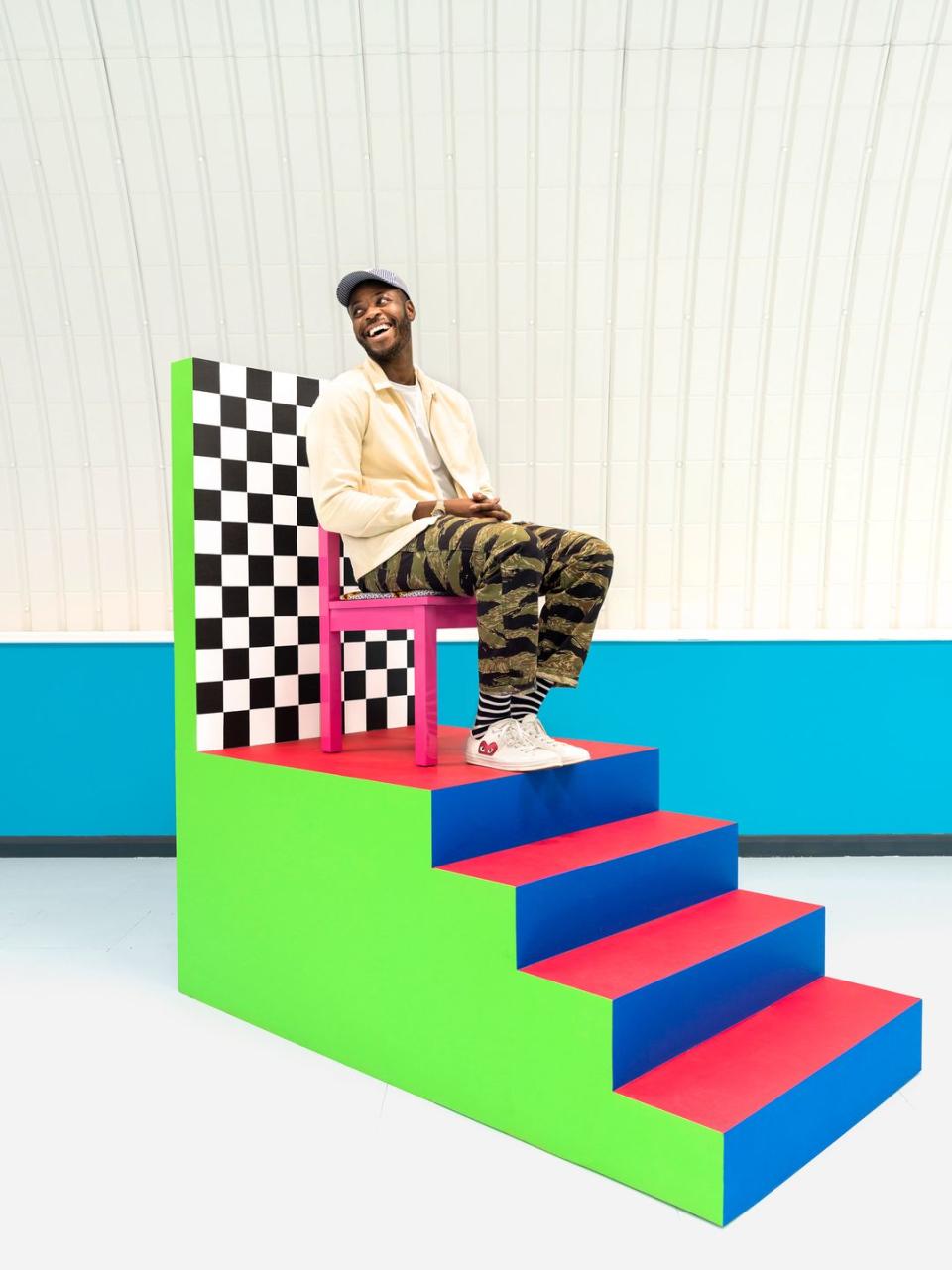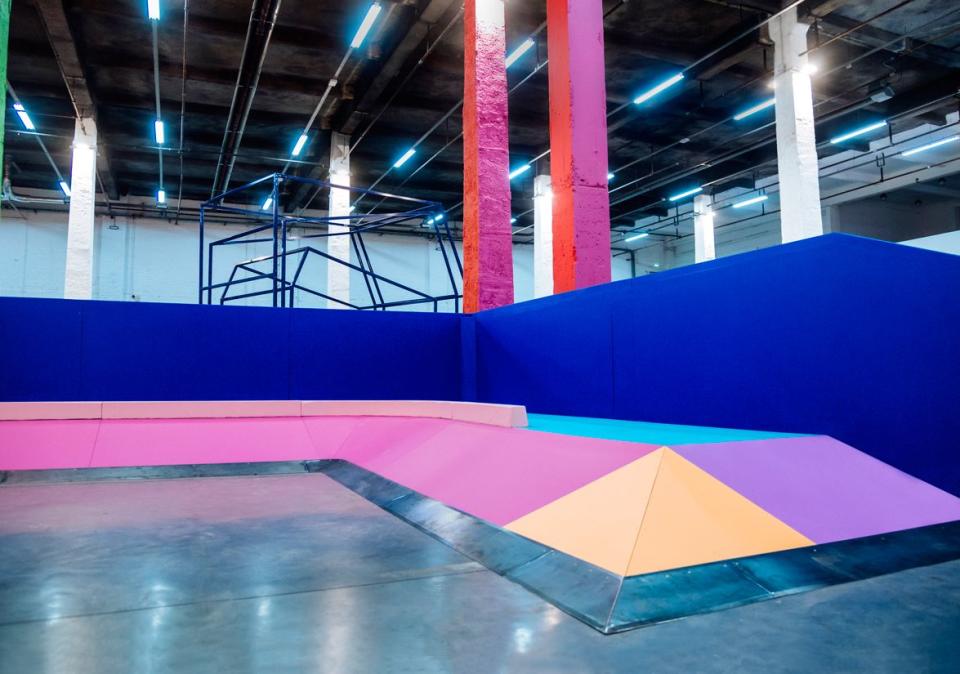This Is the Most Colorful Skate Park You’ll Ever See

British designer Yinka Ilori took time out of his busy schedule to talk to articles editor Charles Curkin about the new skate park he recently designed in Lille, France.
ELLE Decor: You recently unveiled your latest major project: the Colorama skate park at La Condition Publique cultural center, in Lille, France. Did you learn how to skateboard to prepare?
Yinka Ilori: No, but I had a Bart Simpson skateboard growing up. I was always worried about hurting my elbow. It didn’t go beyond skating back and forth.
ED: The first thing that anyone will notice, as with all of your work, are the bright colors you used everywhere. How did you choose your palette?
YI: The building’s facade has some amazing glazed brickwork—green, orange, and red. I wanted to bring an element of that inside the park, so it felt like there was some kind of connection.

ED: How has the response been from Lille’s skating community?
YI: Incredible. I was nervous when I was invited. For me, a skate park is like a ballet theater. You can’t just go into one and perform.
ED: Did you get to attend the park’s unveiling in July?
YI: I watched it on my computer, which was emotional. I wish I could have been there. I’m going to go down in September with a board and attempt to skate.
ED: Good luck. You’ve designed other public spaces, like an adult playground installation for Pinterest in Cannes, France, in 2019. That’s another unique commission.
YI: Pinterest said it wanted me to make a temporary interactive space based on its data of the most-searched colors in the world. So I designed a playground through an adult lens.

ED: Playground design isn’t a subject that’s often discussed.
YI: The ones in the U.K. are so frustrating. They’re based on boring templates. You really have to tap into the families and cultures of the area you’re designing for. Playgrounds are a huge part of a child’s growth.
ED: Children have been kept out of playgrounds of late. Will that have a deleterious effect on them?
YI: If your daughter is three years old and told she can’t play with anyone, that’s a problem. The pandemic is definitely going to change the way we play in general.
ED: You’re best known as a furniture designer. Where did your love of bright and bold colors come from?
YI: It came from seeing my Nigerian mother and father wear so much color. It was incredible. People gave my parents respect for wearing bold hues, which, in turn, gave them pride.

ED: In 2017, you worked with recovering addicts on a collection of upcycled chairs to raise money for the Restoration Station charity in London. What did you take away from the experience?
YI: You often forget what people are going through. I don’t know what it feels like to be an addict, but what they go through is tough. It was an honor to work with them, to have them allow me into their space and into their lives.
ED: When you see a plain white room, what’s your immediate reaction?
YI: I would wonder if the person who it belongs to is OK. I’d wonder if they’re sad. Why would you want to paint your room white? Color is an expression of who you are.
ED: If you could give the Ilori treatment to any extant building, which would it be?
YI: The council estate where I grew up in London. I’d love to paint a mural there or design a playground. I learned about different cultures and about many races, religions, and perspectives. It made me understand the power of community. It’s the most beautiful place I know.


This story originally appeared in the October 2020 issue of ELLE Decor. SUBSCRIBE
You Might Also Like

